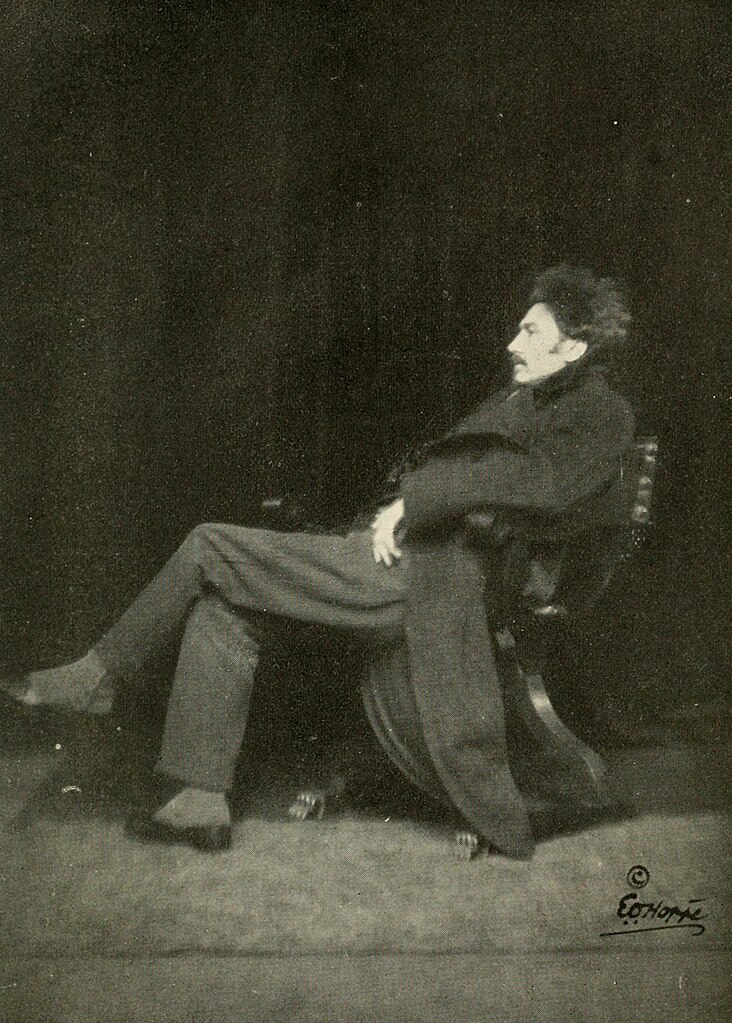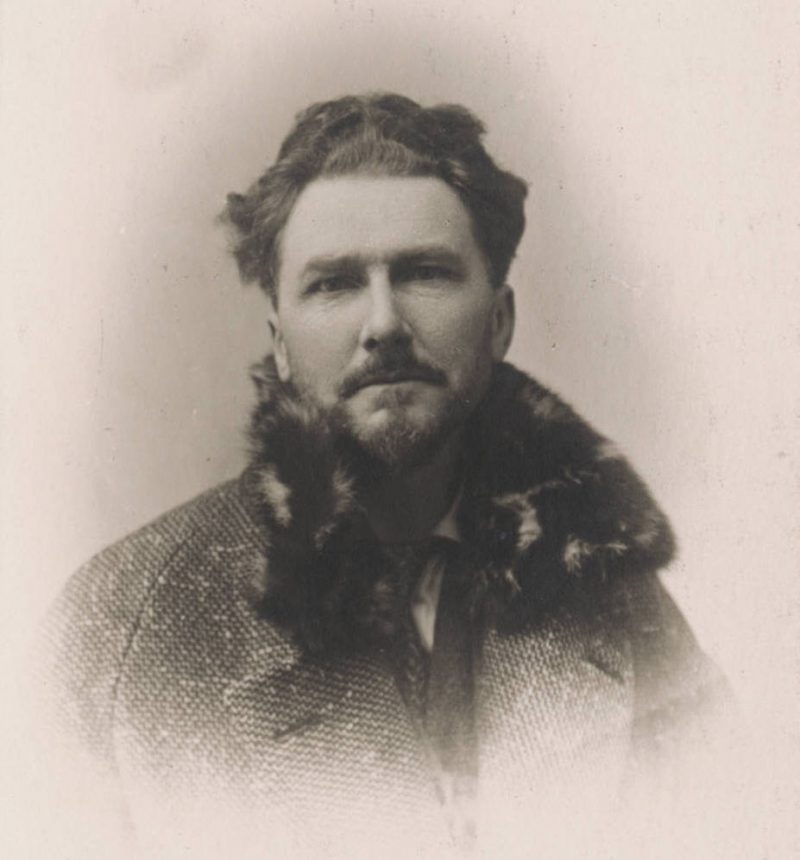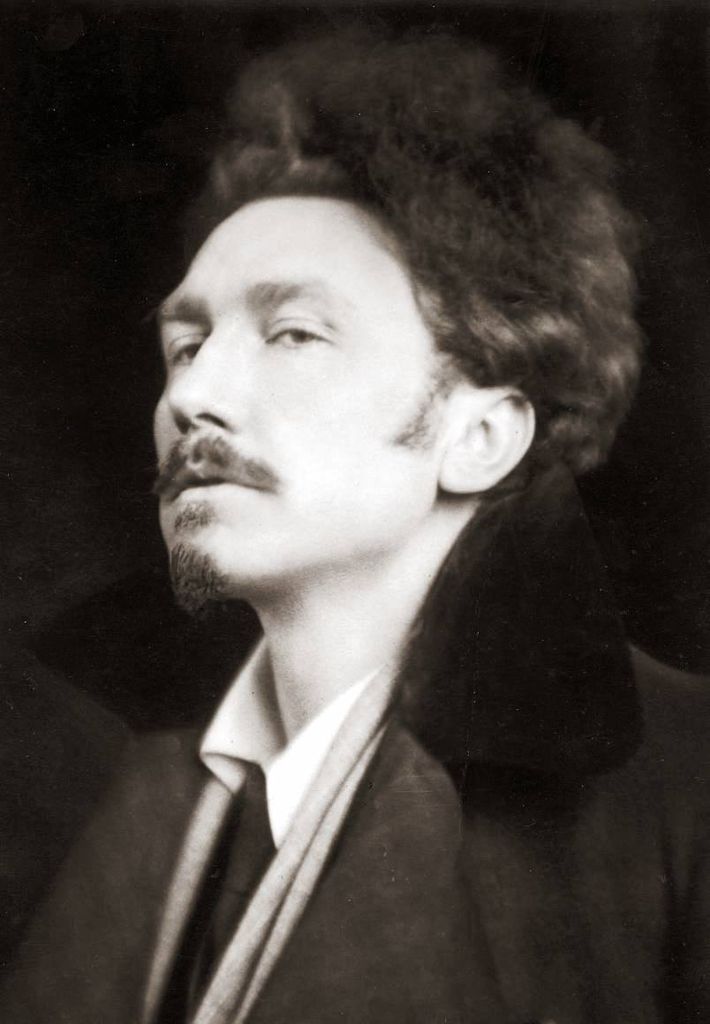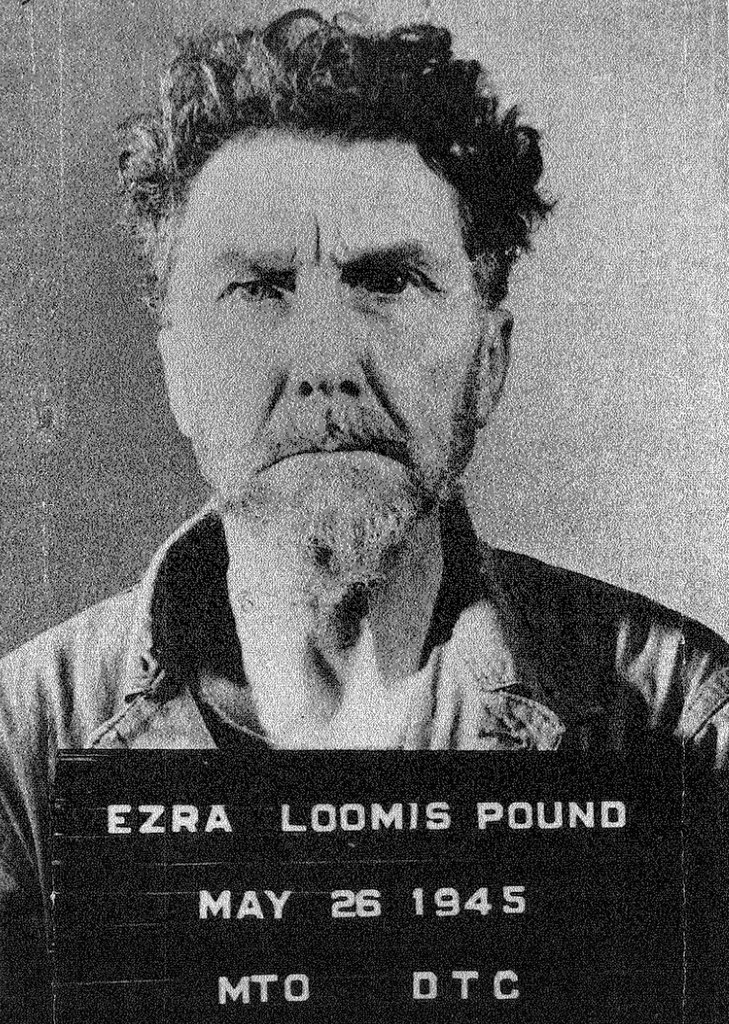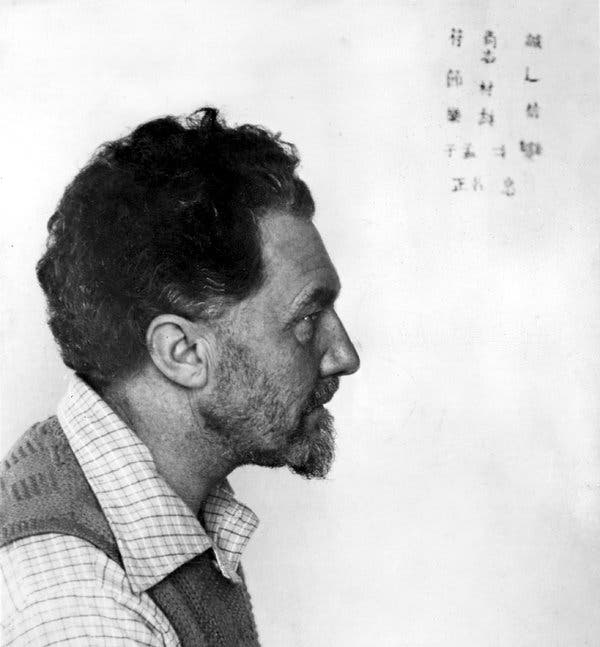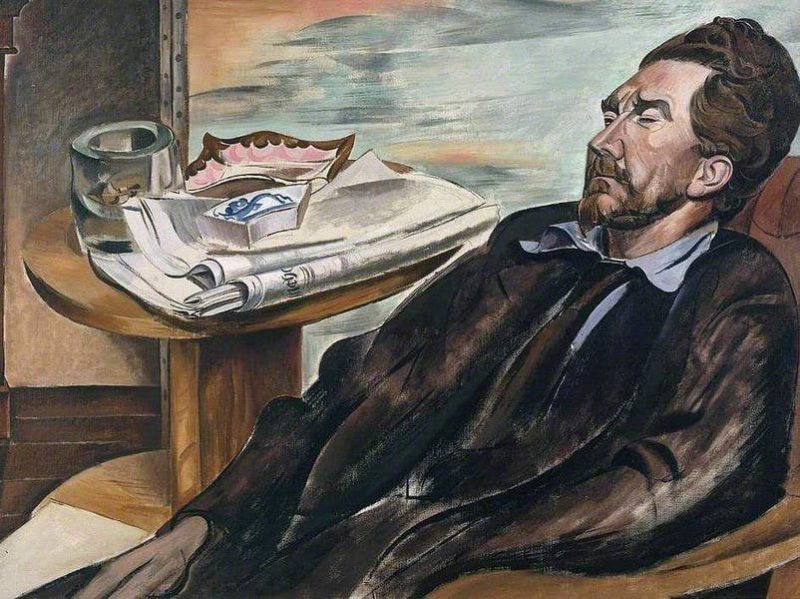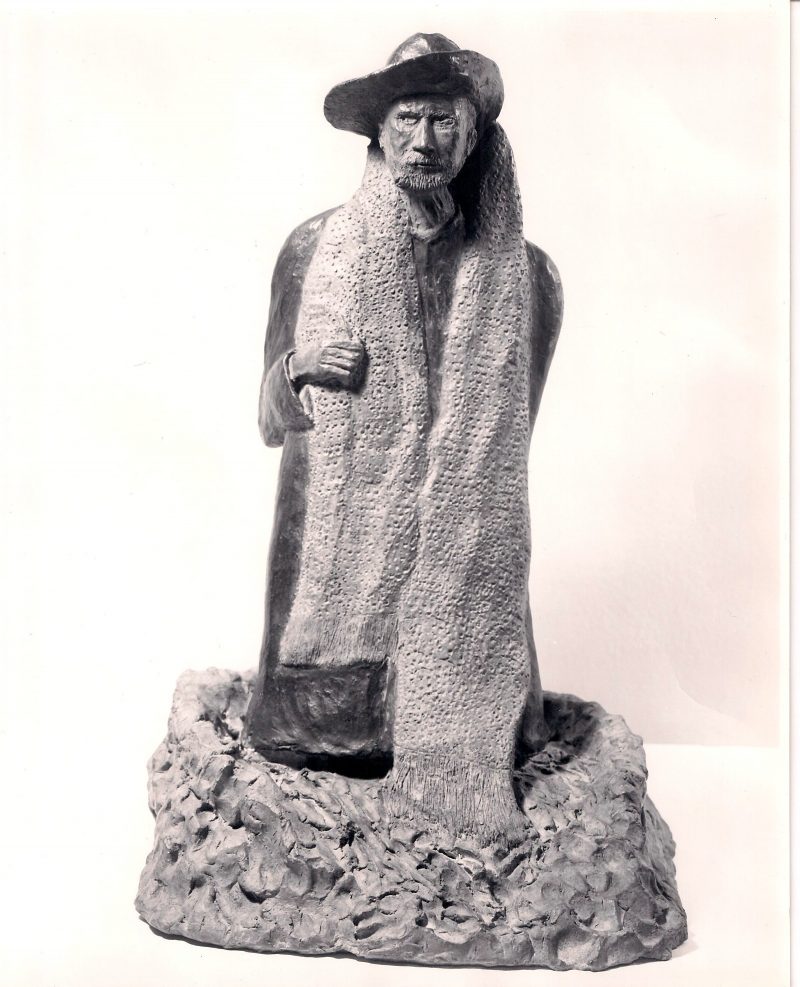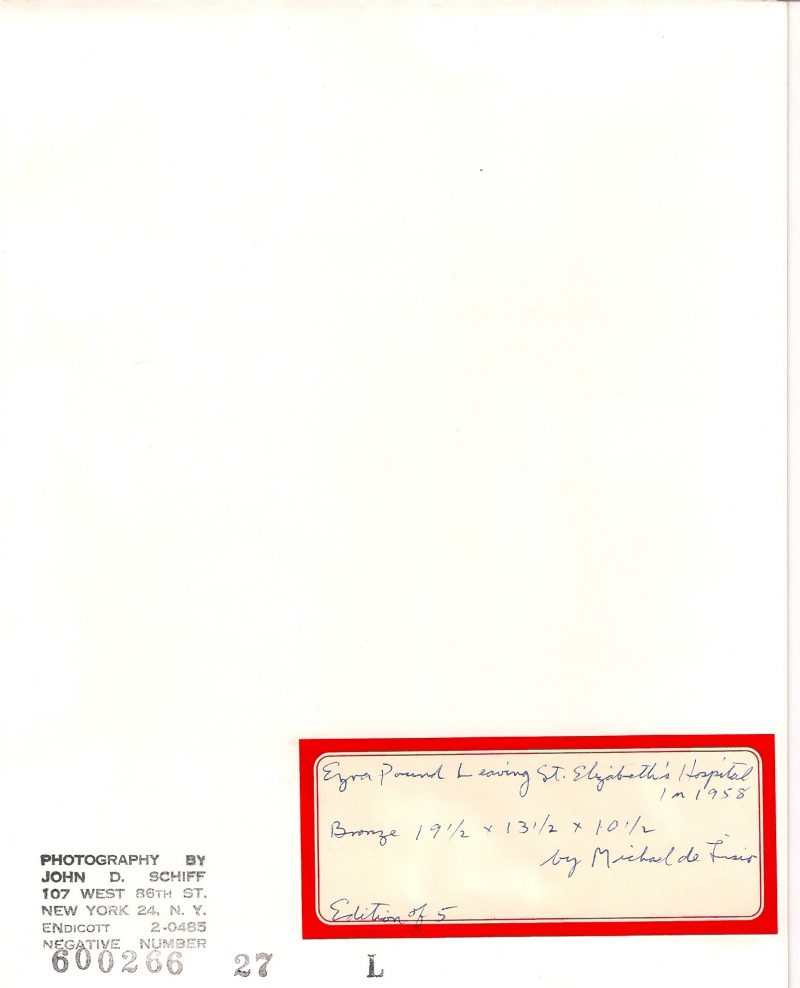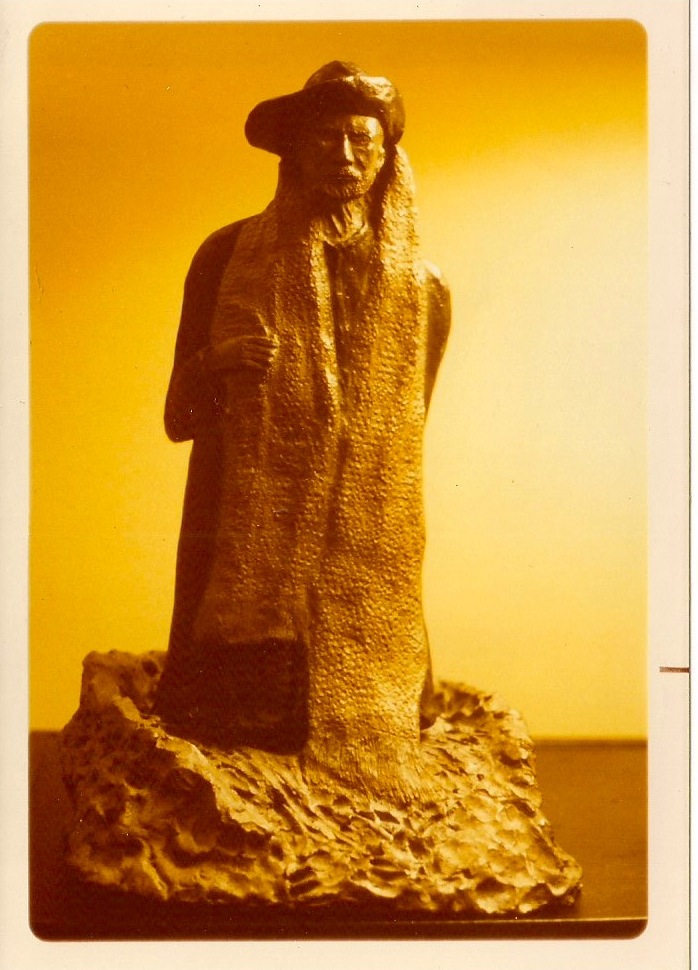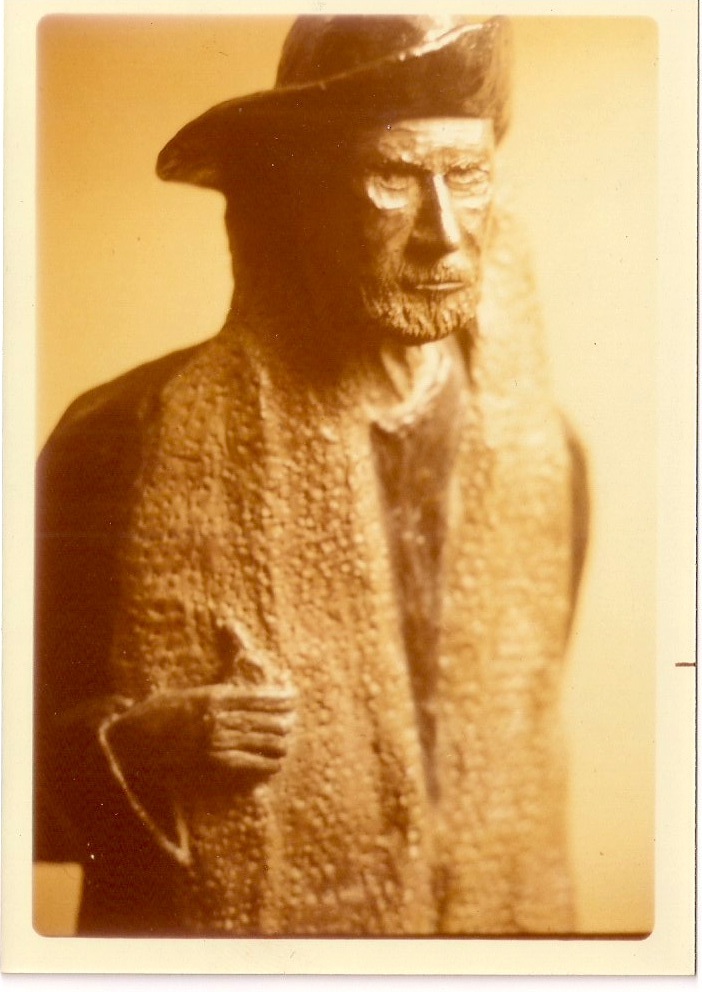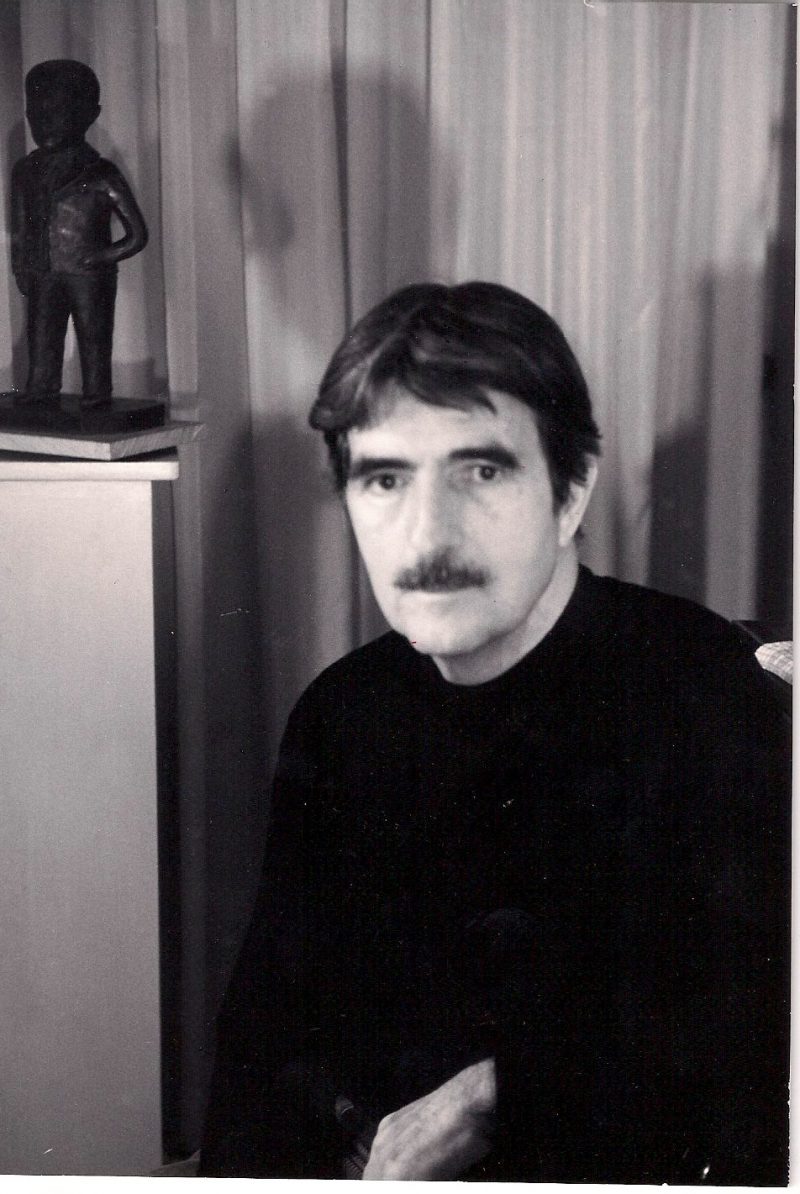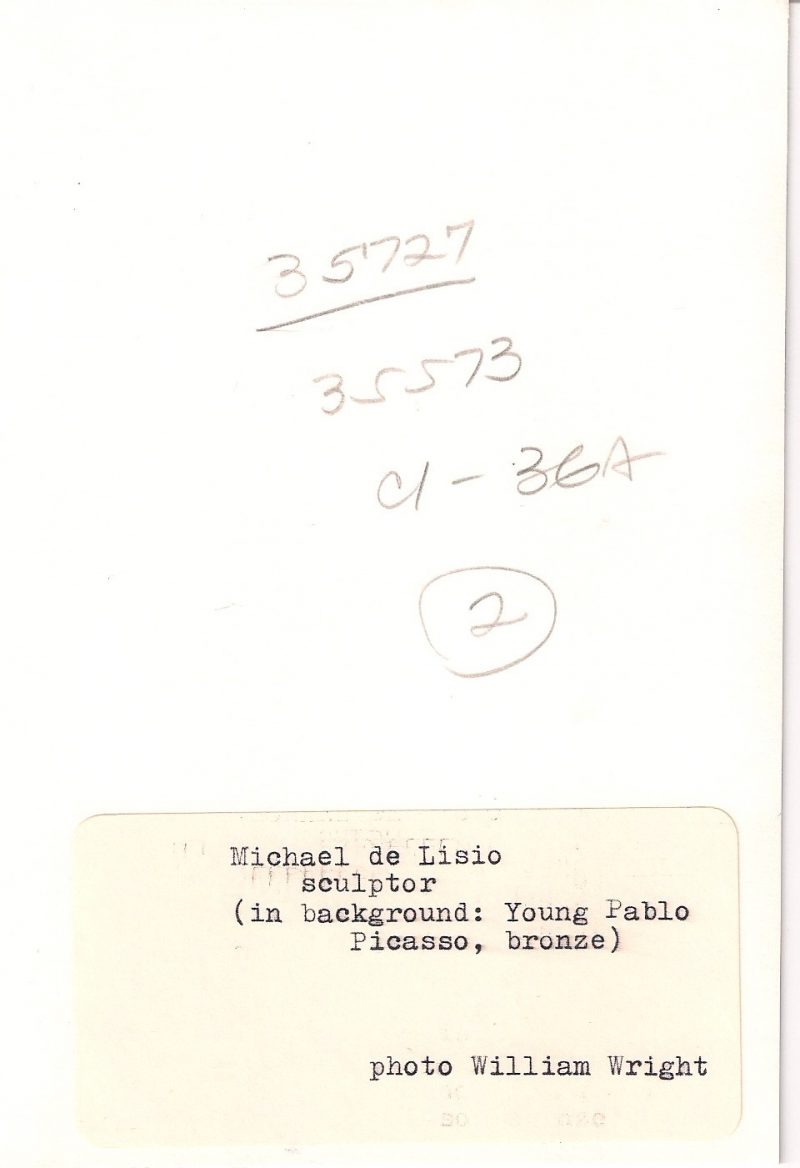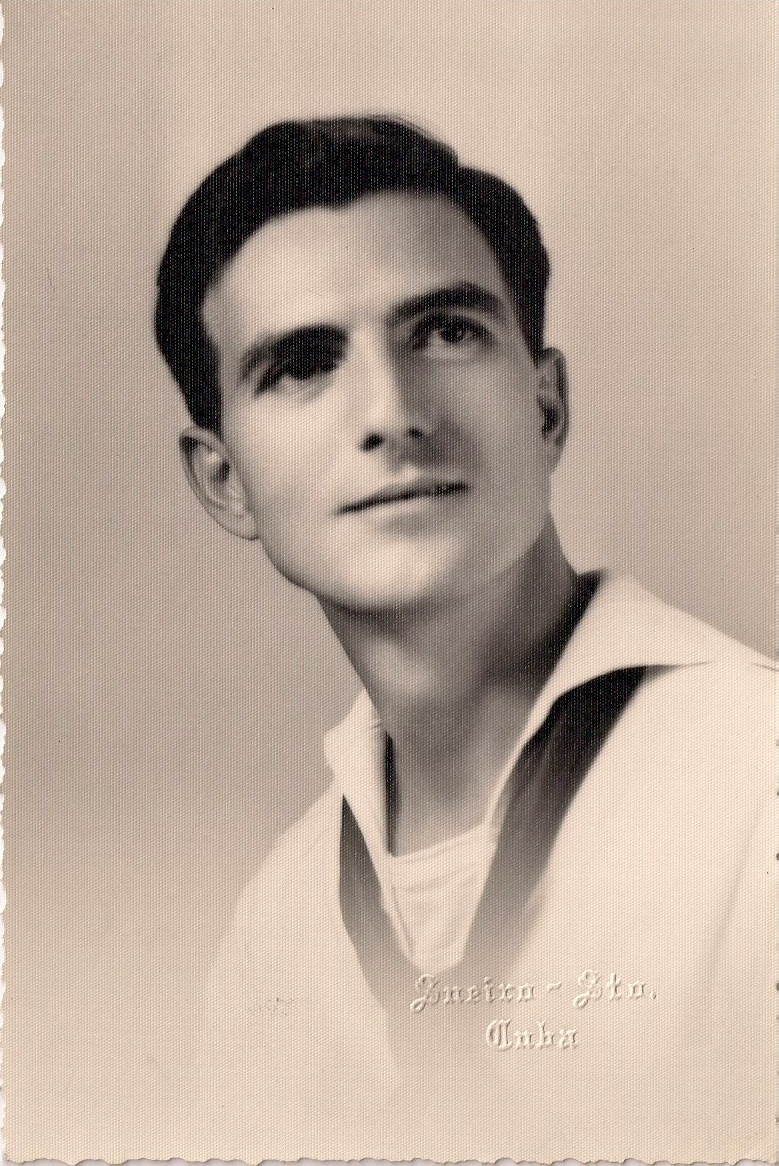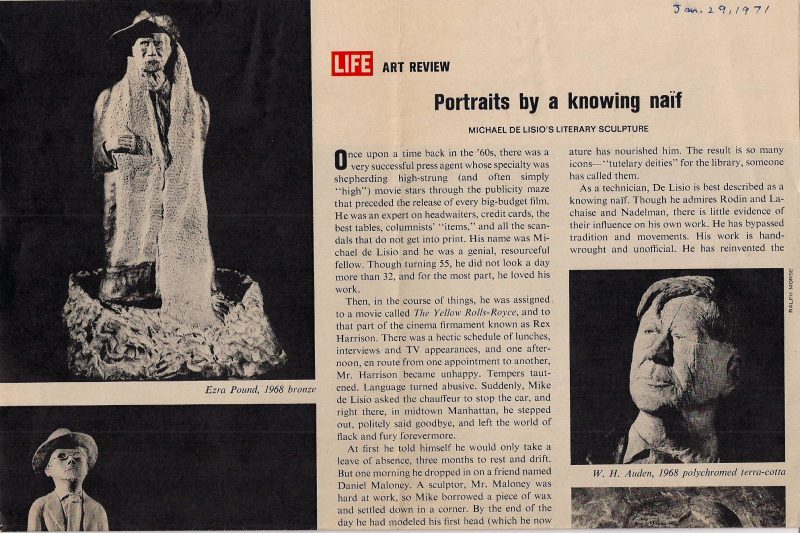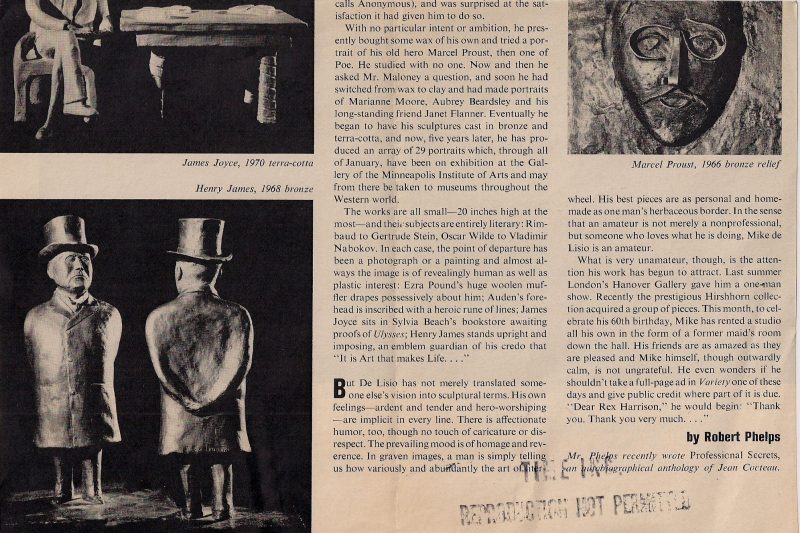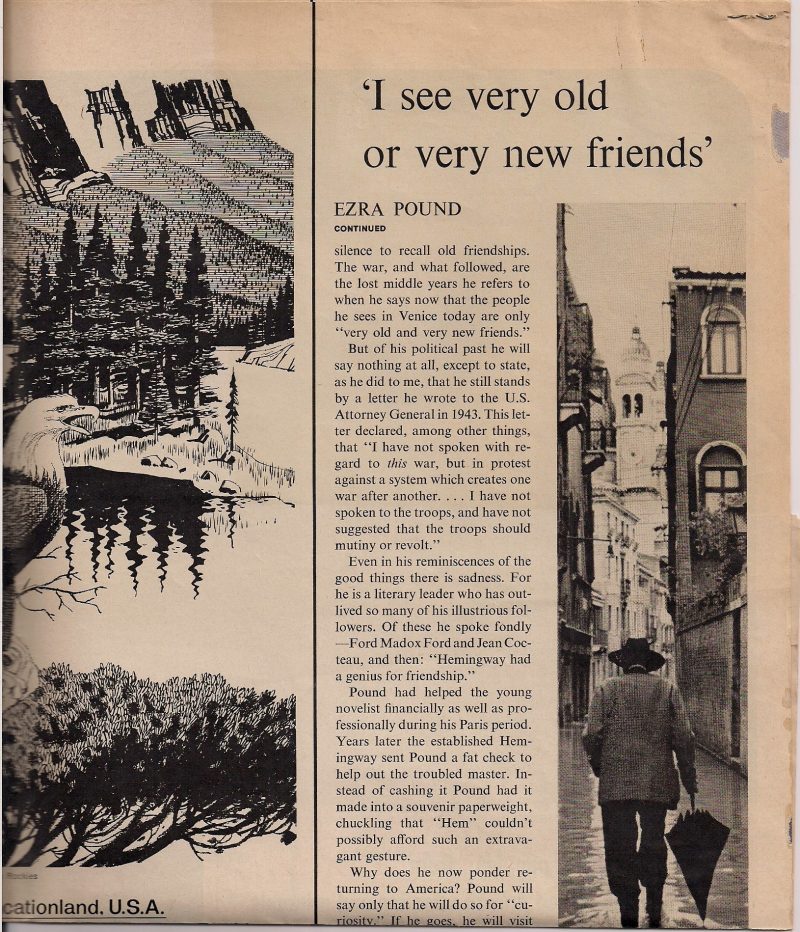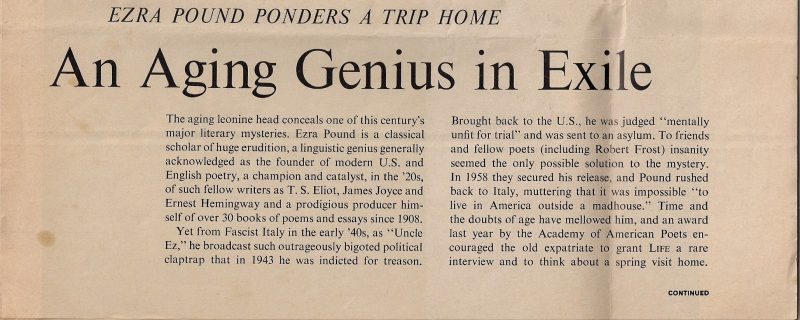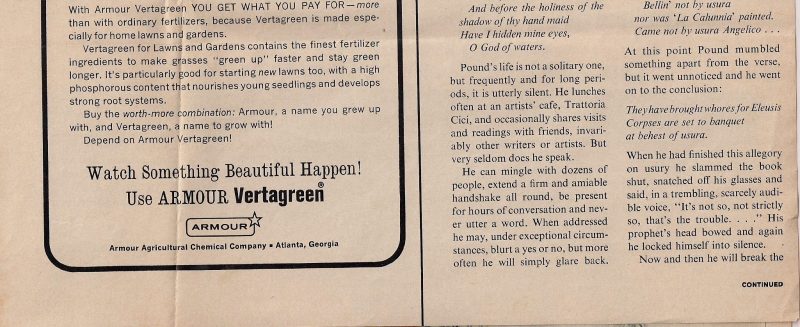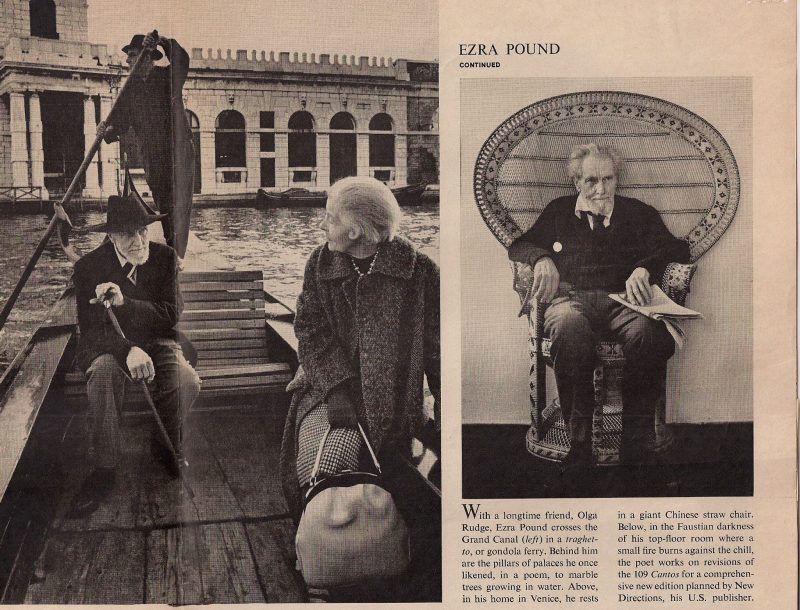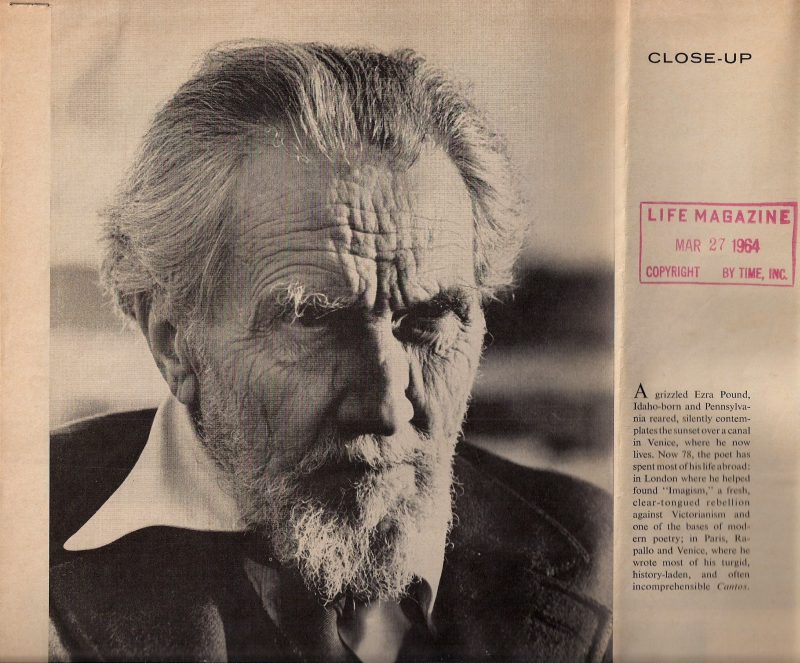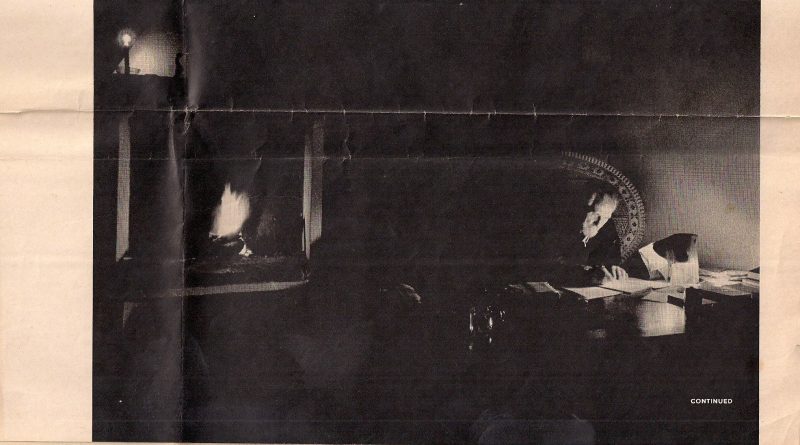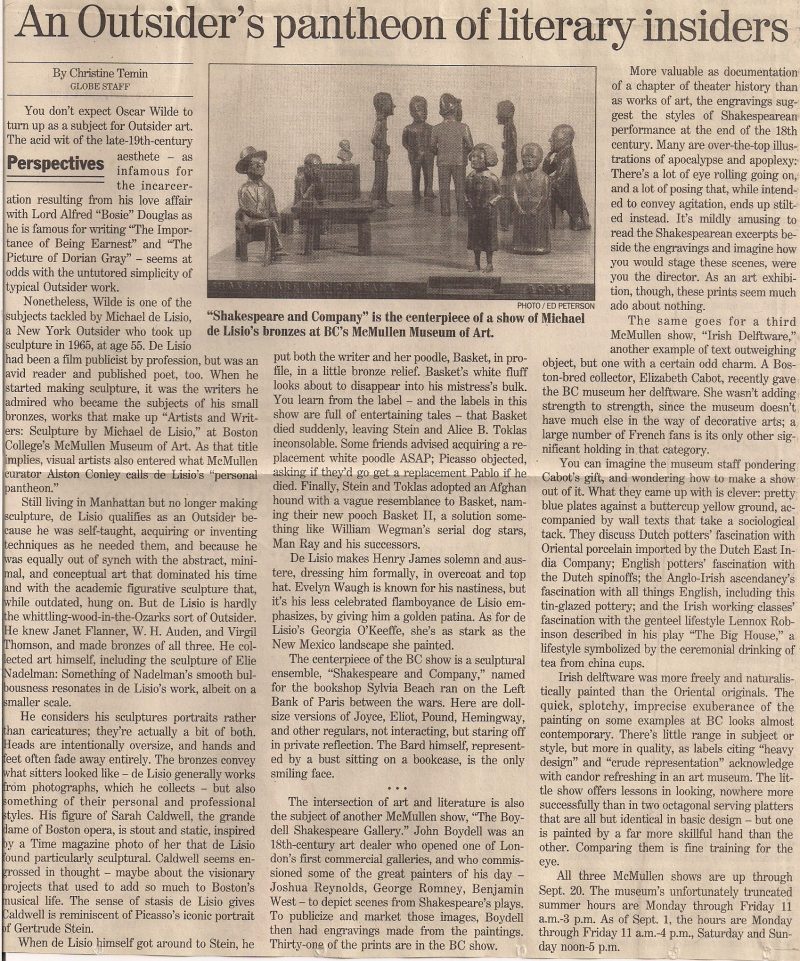Bronze Sculpture Ezra Pound, Michael De Lisio, 1968
“Gods of the wingèd shoe!
With them the silver hounds,
sniffing the trace of air!”
– Ezra Pound, 1885-1972
——————————————————————————-
Bronze Sculpture made by self-taught artist Michael de Lisio 1911-2003
Size: 19.5″ Limited Edition: 2/5 Signature & edition etched in bronze / at base of sculpture.
Medium: bronze Year: late 1968 (sculpture is quite heavy)
Provenance: Private Collection, New York City
USD$5500
New York Times Obituary: Michael de Lisio
https://www.nytimes.com/2003/02/02/nyregion/michael-de-lisio-91-sculptor-who-turned-photos-into-statues.html
Michael de Lisio, a sculptor and poet, died on Jan. 21 in Manhattan, one day short of his 92nd birthday.
Mr. de Lisio was born in Manhattan. His parents were Italian immigrants, and he was largely self-taught. He had minor success as a poet, publishing sporadically in little magazines as well as in Scribner’s and The New Yorker.
After serving in the United States Navy during World War II, he worked for two decades in public relations, mostly for MGM. In 1965, at 54, he turned to sculpture. Working in painted terra cotta as well as in bronze, he began making small, seemingly quaint yet psychologically telling portraits of the writers and artists he admired and sometimes knew personally.
His depictions usually took well-known photographs startlingly into three dimensions, like Barbara Morgan’s famous 1940 image of Martha Graham with her torso pitched forward and her long gown sweeping upward like an open fan.
Other subjects included W. H. Auden, Janet Flanner, Truman Capote and Virgil Thomson, who were friends, as well as Emily Dickinson, Henry James, Marsden Hartley, Alfred Stieglitz and Toulouse-Lautrec. He also made a group portrait of Sylvia Beach and writers who congregated at her bookshop, Shakespeare & Company, in Paris in the 1920’s and 30’s.
He had New York gallery shows at Brooke Alexander in 1978 and Zabriskie in 1986 and a retrospective at Boston College in 1998. His works are in the collections of the Hirshhorn Museum and Sculpture Garden in Washington, the Addison Gallery, Boston College and the Smith College Museum of Art.
Because of failing eyesight, Mr. de Lisio returned to poetry in his last decade, working in a style as understated and compressed as his sculpture:
“The charisma of 90
can be undone
by slowly becoming
91″.
Ezra Pound

Ezra Pound is widely considered one of the most influential and most difficult poets of the 20th century; his contributions to Modernist poetry are enormous. He was an early champion of a number of avant-garde and Modernist poets, developed important channels of intellectual and aesthetic exchange between the United States and Europe, and contributed to important literary movements. Pound, along with Richard Aldington and other writers, founded the Imagist movement. Pound edited its first anthology, Des Imagistes, in 1914. He also helped found vorticism with Wyndham Lewis and the sculptor Henri Gaudier-Brzeska, which, for some, replaced Imagism. The founders published the magazine Blast.
In his efforts to develop new directions in the arts during what is now considered the Modernist period, Ezra Pound promoted and supported such acclaimed writers as James Joyce, T.S. Eliot, Robert Frost, W.B. Yeats, William Carlos Williams, Marianne Moore, H.D., and Ernest Hemingway.
Pound’s published books include A lume spento (1908), Exultations (1909), Personae (1909), Provenca (1910), Canzoni (1911), Lustra and Other Poems (1917), Hugh Selwyn Mauberley (1920), Umbra: Collected Poems (1920), Cantos I–XVI (1925), A Draft of XXX Cantos (1930), Homage to Sextus Propertius (1934), The Fifth Decade of Cantos (1937), Cantos LII-LXXI (1940), The Pisan Cantos (1948), Patria Mia (1950), and The Cantos (1972).
Ezra Pound was born in Hailey, Idaho, in 1885, and grew up near Philadelphia. He completed undergraduate work at the University of Pennsylvania and earned a BA in philosophy from Hamilton College, but he lived much of his adult life in England, France, and Italy.
Pound’s life’s work in poetry, The Cantos, remains a signal Modernist epic. Its mix of history, politics, and what Pound called “the periplum”—a point of view of one in the middle of a journey—gave countless poets incentive to develop a range of poetic techniques that capture life in the midst of experience. In an introduction to the Literary Essays of Ezra Pound, T.S. Eliot declared that Pound “is more responsible for the 20th-century revolution in poetry than is any other individual.” Donald Hall reaffirmed in remarks collected in Remembering Poets that “Ezra Pound is the poet who, a thousand times more than any other man, has made modern poetry possible in English.” Pound arguably never sought, nor had, a wide reading audience for his own work during his lifetime; his technical innovations and use of unconventional poetic materials often baffled even sympathetic readers. Early in his career, Pound aroused controversy because of his aesthetic views and later, because of his political views, including his support for the Fascist government in Italy. For the greater part of the 20th century, however, he devoted his energies to advancing the art of poetry.
Pound was involved in Fascist politics, particularly of Mussolini, and did not return to the United States until 1945, when he was arrested on charges of treason for broadcasting Fascist propaganda by radio to the United States during World War II. In 1946, he was acquitted of the charges and declared mentally unstable and committed to St. Elizabeths Hospital in Washington, D.C. During his confinement, the jury of the Bollingen Prize for Poetry overlooked Pound’s political career and focused on his literary achievements, awarding him the prize in 1948 for the Pisan Cantos. After appeals from those who knew him, Pound was released from the hospital in 1958. He died in November of 1972 and was buried in Italy, on the cemetery island Isola di San Michele.
Research:
http://www.bc.edu/libraries/about/exhibits/burns/delisio.html
http://www.bc.edu/libraries/newsletter/2004fall/art.html
https://en.m.wikipedia.org/wiki/Ezra_Pound
https://www.ndbooks.com/author/ezra-pound/
“A Visit to Ezra Pound in St. Elizabeth’s Hospital, 1948,” by John Berryman
